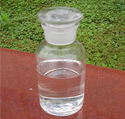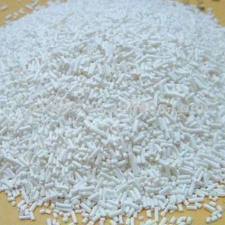Products
 News
NewsThe Discovery Of Benzoic Acid Took Place In The 16th Century
Benzoic acid is the very basic aromatic and organic acid that becomes a crystalline solid. Salts of the Benzoic Acid aromatic hydrocarbon are food preservatives. The benzoic acid is occurring naturally as a free radical and as the ester form in many types of plants & animals. The gum of Benzoin is where the Benzoic acid is being derived from. Benzoic acid is the product produced by an apple if infected with a fungus. Organic chemical compounds are synthesized with benzoic acid which functions as an important chemical starter.
Benzoic acid had been discovered as early as the 1500’s. It was Salkowski who discovered back in 1875 that Benzoic acid is antifungal. In order to produce Benzoic acid in large quantity, toluene is partially oxidized to create the hydrocarbon. Benzoic acid is being used in other chemicals like the Benzoyl Chloride. The many derivatives of Benzoic acid can be produced with the important starting chemical Benzoyl chloride. Benzoic acid and salts are now commonly used for preserving different foods and you can check if there is E210 up to E213 in the label. Many known sauces are using Benzoic acid. Benzoic acid prevents the growth of yeast, bacteria and molds.
Benzoic acid is part of the ingredients for Whitfield’s ointment. Acne treatment lotions also contain the benzoic acid ingredient. One of the derivatives of Benzoic acid is the Benzoyl Peroxide which is a famous anti-acne chemical. Benzoyl Peroxide will react once applied to the skin and turn into Hydrogen Peroxide & Benzoic Acid. Sodium benzoate is very soluble and it has 200x the solubility of benzoic acid. Soft drinks amongst many liquid products are commonly containing the sodium benzoate preservative with antimicrobial ability. Sodium benzoate also had its share of controversy as a common ingredient for food preservation. To prevent soft drinks from spoiling and to avoid the growth of bacteria, sodium benzoate is used. A lot of liquid vitamins also contain the potassium and/or the sodium benzoate ingredient. Some are concerned about the possible reaction of ascorbic acid and benzoic acid & salts concerning about the end product. Sodium benzoate may react with ascorbic acid that could lead to the product benzene which is harmful. Liver is where the sodium benzoate is processed and metabolized. Benzoic acid as compared to sodium benzoate is better in fighting microbes but still sodium benzoate is preferred. An explosion is possible when air is mixed up with the benzoic acid vapor. Redness as well as itching can be experienced when benzoic acid is in contact with the skin.






